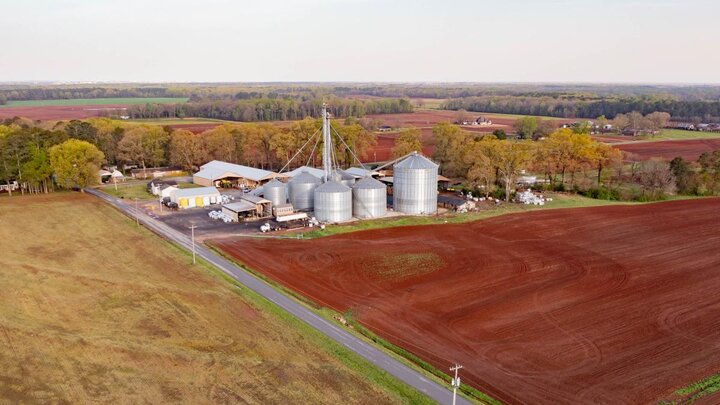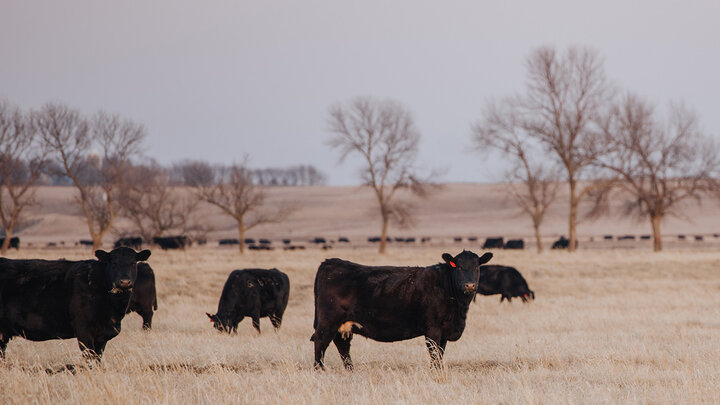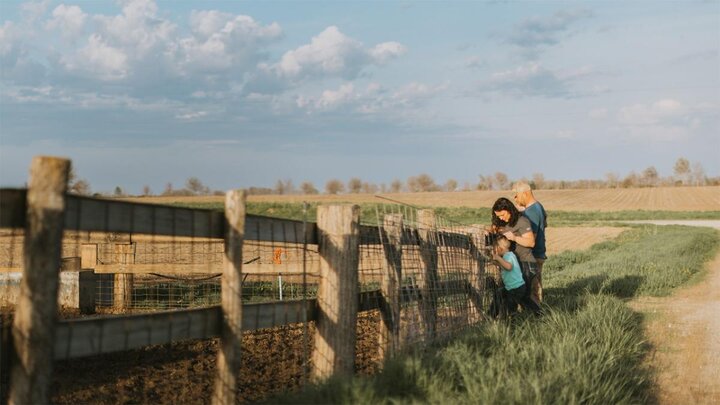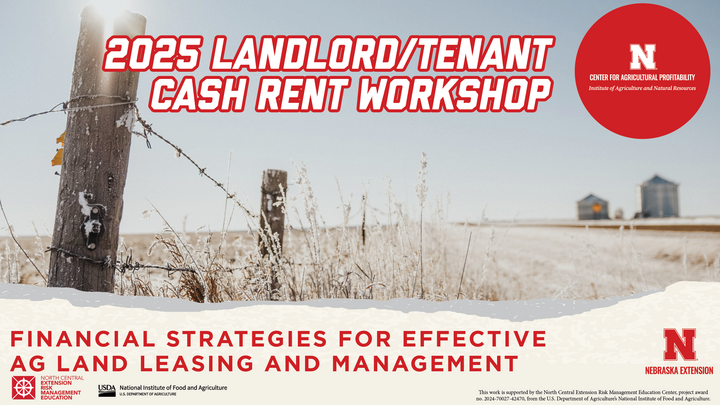For the 2024 growing season, switching to either cash rent, flex lease, or crop share impacts the landlord’s and tenant's price and yield risk mitigation. Changing crop and input prices may lead to negotiations for a different lease arrangement. Negotiations focus on identifying a lease arrangement appropriate for the landlord and tenant's needs, interests, and risk tolerance. Depending upon the perception of commodity prices, input expenses and drought conditions may motivate selecting a particular lease type.
Agricultural operators for 2024 may face rising input costs for seed, fertilizer, and chemicals, with crop prices declining from the previous year's high. Operators may reconsider the selected lease arrangement utilized on rented cropland based on these underlying fundamentals. The three most used cropland lease arrangements in Nebraska, as previously defined in 2015 (Jansen and Wilson), include:
- Crop Share: The landowner receives a percentage of the crop yield as payment for leasing the agricultural land to the tenant.
- Cash Lease: The landowner receives an agreed-upon cash payment amount for leasing the agricultural land to the tenant.
- Cash Lease with Flexible Provision (Flex Lease): The landowner and tenant set a base cash rental rate, which can be flexible based on actual crop yields, prices, or a combination. Final cash payment to the landlord for leasing the agricultural land to the tenant may have premiums or discounts on the base rate depending upon the agreement between the parties.
The level of risk associated with price or yield may vary by district within the state. Figure 1 shows the estimated distribution of crop share, cash lease, and flex leases throughout Nebraska in 2022. Cash leases and crop share make up 88% of rental agreements in the state, with 51% and 37%, respectively. Flex leases make up approximately 12% of the total lease agreements reported.
Districts in western Nebraska have a higher percentage of crop share, such as the Northwest and Southwest at 65% and 57%, compared to districts with a higher proportion of cash leases. The Northeast and Central Districts reported the highest use of flex leases at 15% and 13%, respectively. Trends in lease types across the state reflect expected risk and financial returns for the landlord and tenant. Expected rainfall, drought, or hail all influence anticipated risk and financial returns in the farmland lease arrangement.
Evaluating the risk and financial return from the landlord and tenant perspective depends upon the lease type. Figure 4 summarizes different leases' risk and financial returns, including crop share, cash, flexible cash, and custom farming. Depending upon the tenant or landlord's position in the lease, the financial return and risk revert against the other party. For example, the landlord does not bear any financial or production risk in a cash lease, assuming the tenant makes the rental payment on time, but the renter faces all price and yield risks or rewards
Custom farming involves the landlord hiring the tenant to perform all production services, such as tillage, planting, spraying, or harvesting, for a set fee. In this case, the landlord bears all production risk and receives any disaster or crop insurance indemnity payments. For a crop-share lease arrangement, the split on disaster payments or crop insurance indemnities is proportional to the share arrangement.
Selecting a particular farmland lease type relates to the landlord and tenant's financial capacity and risk preferences. Carefully selecting and communicating the intentions of one party to the other remains essential in setting up a successful lease arrangement. Understanding the inherent production risk in an area coupled with expectations for commodity prices serves as the basis for selecting an appropriate farmland lease and related contract provisions for 2024.
Figure 1. Land Lease Rental Arrangements by Agricultural Statistics District in Nebraska for 2022
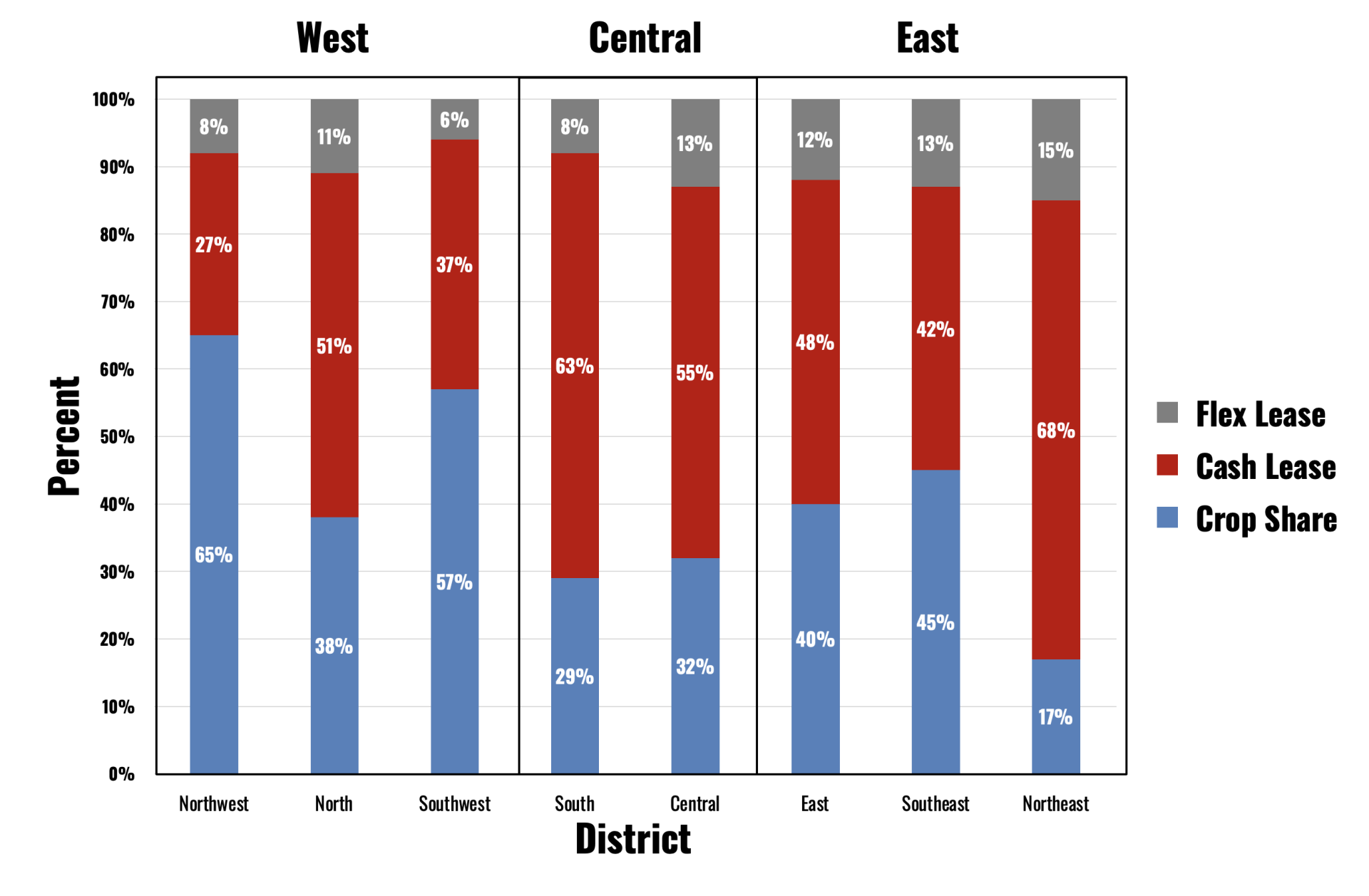
Source: Nebraska Farm Real Estate Market Development Survey, 2022.
Figure 2. Risk and Financial Return by Farmland Lease Arrangement Type
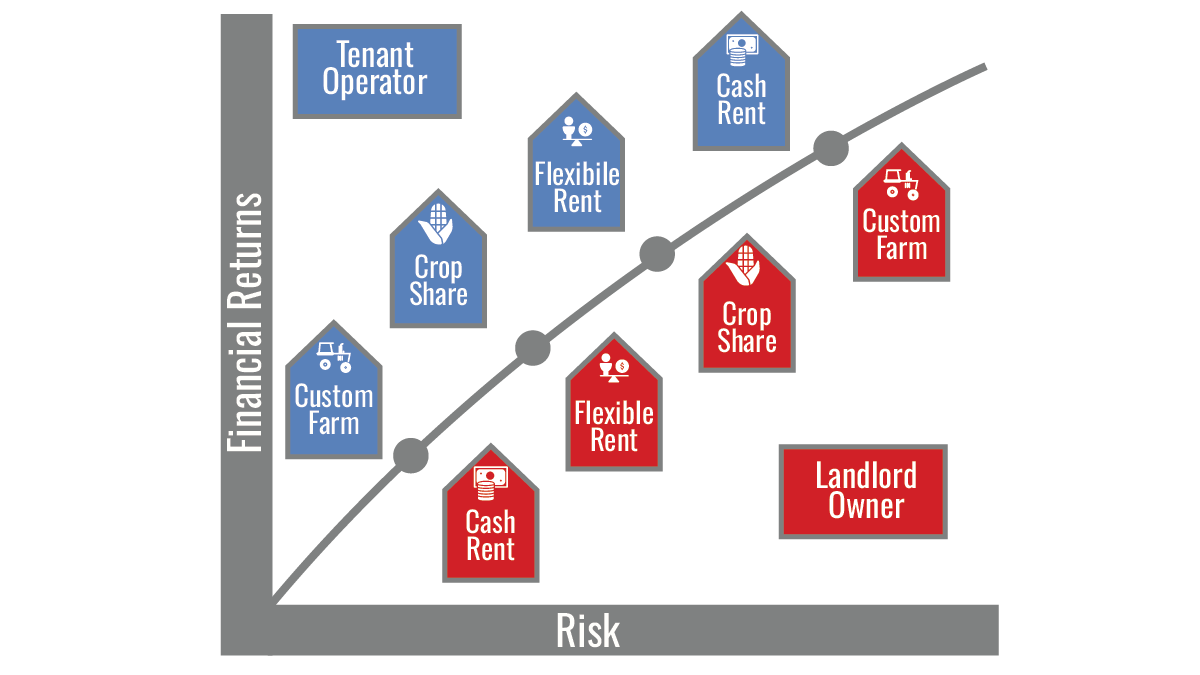
Jim Jansen, (402) 261-7572
Agricultural Economist
University of Nebraska-Lincoln
jjansen4@unl.edu
Jeffrey Stokes, (402) 472-2127
Professor of Agricultural Economics
University of Nebraska-Lincoln
jeffrey.stokes@unl.edu
References
Jansen, J. & Stokes, J. (2022, June). Nebraska Farm Real Estate Market Highlights 2021-2022, retrieved January 2, 2023 from the UNL Digital Commons: https://digitalcommons.unl.edu/agecon_farmrealestate/.
Jansen, J. & Wilson, R. (2015, June). Nebraska Farm Real Estate Market Highlights 2014-2015, retrieved January 2, 2023 from the UNL Digital Commons: https://digitalcommons.unl.edu/agecon_farmrealestate/.
